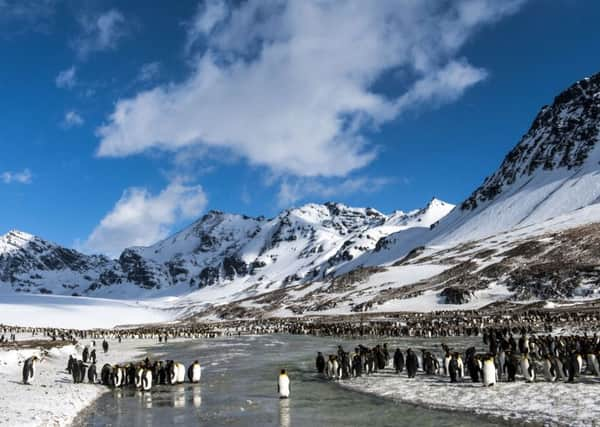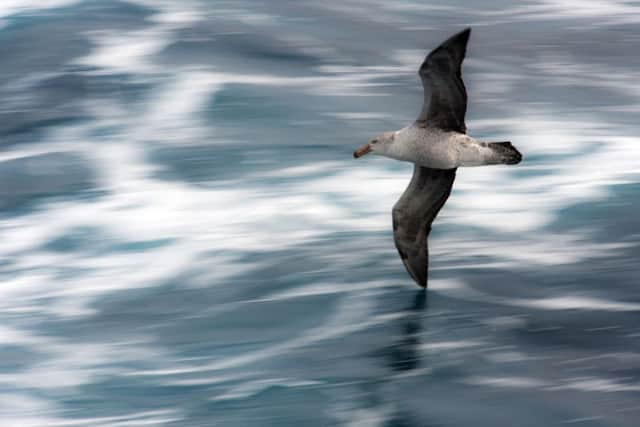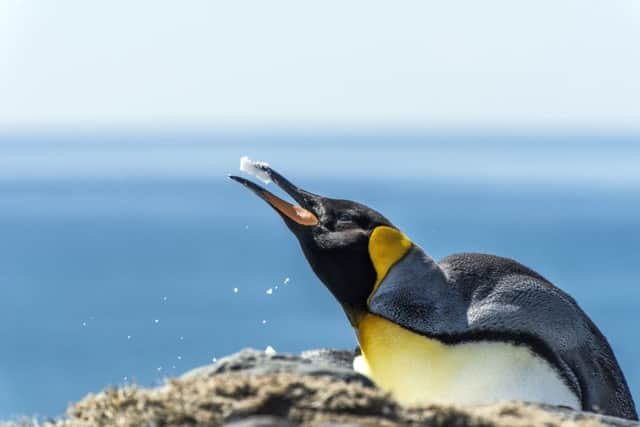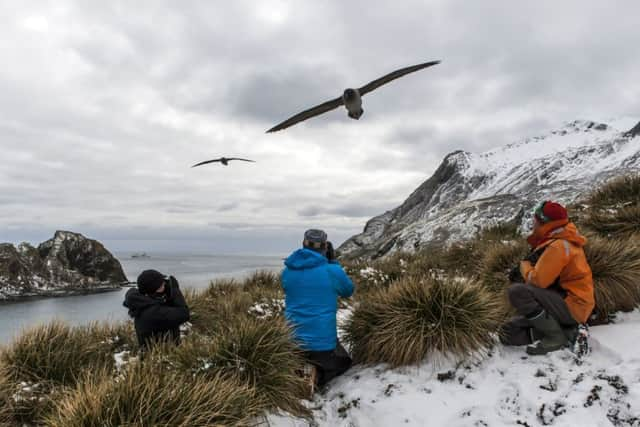Travel: Following in Shackleton’s footsteps


Adolescent males frequently fight to resolve disagreements, but the bloodiest of battles nearly always involve a female. In the case of this particular fracas, escalating just metres in front of me, there are several young ladies at stake.
Like gladiators in a Roman arena, our two hormone-fuelled combatants size each other up, bloodshot eyes raging with anger.
Advertisement
Hide AdAdvertisement
Hide AdIn September and October, South Georgia’s beaches are overrun with elephant seals coming ashore to give birth and mate, and alpha male beachmasters, identifiable by their distinctive inflated proboscis, must constantly defend their harems.


A British Overseas Territory in the Southern Atlantic Ocean, sub-Antarctic island South Georgia is arguably one of the world’s most pristine and abundant wildlife havens. Yet, remoteness (no planes can land here) and fierce weather conditions make it extremely difficult to visit. Most of the 7,000 annual tourists spend two to three days here as part of a longer itinerary to the Antarctic Peninsula.
Hoping to examine the island in greater depth, I’ve joined a new South Georgia focused voyage with Canadian expedition company One Ocean Expeditions – currently the only itinerary of this type available. Travelling in October, earlier than any other ship, no one really knows what to expect.
A willingness to embrace the unknown is something we share with one of South Georgia’s earliest explorers, Sir Ernest Shackleton, who famously traversed the island after two years of being lost on the ice following a failed Antarctic mission.
Advertisement
Hide AdAdvertisement
Hide AdNext year marks the centenary of his safe arrival at the Stromness Bay whaling station, and we’re joined on board by a team of young explorers sponsored by the Antarctic Heritage Trust, who are planning to replicate his journey on skis.


Our 14-day trip begins from Stanley on the Falkland Islands (reached by a scheduled LATAM flight from Santiago, Chile), and we spend the first two days at sea as we travel 800 nautical miles to South Georgia. We head straight for King Haakon Bay on the west coast, where Shackleton and his two crewmen, Frank Worsley and Tom Crean, landed in the James Caird lifeboat after a turbulent 16-day sailing from Elephant Island.
A furious snow squall cuts short our excursion, and we return to our ship, the 90-passenger Akademik Sergey Vavilov.
Fortunately, an extended trip to South Georgia allows us time to ride out storms and land at spots usually skipped by ships on a tight timetable to reach Antarctica.
Advertisement
Hide AdAdvertisement
Hide AdAt Elsehul, a narrow bay on the very western tip of the island, we watch light-mantled sooty and grey-headed albatross swoop overhead, some gliding so low I’m almost knocked over by the powerful wind beneath their wings.


We also have a permit to visit Prion Island, where wandering albatross nest. An abundance of ankle-biting fur seals prevents ships visiting in summer months, but for now, the tussocks are comfortably calm. Several large and ungainly chicks are still in grassy nests, displaying tufty, down-covered faces only a mother could love.
Wherever we are, a similar soundtrack plays – the chirping melody of the world’s most southerly songbird, the South Georgia pipit. But it was a bell from the whaling station 100 years ago in May 1916 which signalled Shackleton’s first encounter with human habitation in two years. He followed the sound to the station manager’s hut, where he took a long awaited bath.
A hot shower is on the cards for our own intrepid team, who later enthusiastically share their adventure.
Advertisement
Hide AdAdvertisement
Hide AdTheir journey took them across expansive snowscapes and glaciers, and we’re given a taste of that unadulterated icy wonderland on a trip to St Andrews Bay, further south. The swell makes it notoriously tough to land here, but the promise of the largest king penguin rookery in the world spurs us on.
I hike for 45 minutes beneath the shadow of steep-sided mountains, sharp, snow-covered peaks framed by indigo sky. Below a ridge lies the bulk of the 200,000-strong colony, so vast I have to swivel my head 180 degrees to take in the view. Penguins zigzag to the base of the Cook Glacier, and I spend hours tracing geometric patterns of seabirds, frozen rivers and exposed rock in the snow. A fanfare of calls rings out as penguins corkscrew their heads skyward – in what I imagine to be a celebration of the stark beauty of this place.
GETTING THERE
Sarah Marshall was a guest of One Ocean Expeditions (oneoceanexpeditions.com) who offer a South Georgia In Depth voyage on October 15-31, 2016 (16-nights) and Jan 28 to Feb 11, 2017 (14 nights). Prices start from $12,395 per person, sharing a twin cabin and including a flight from Punta Arenas to the Falkland Islands. LATAM (lan.com) offer flights from Heathrow to Puenta Arenas, Chile, then returns from Ushuaia, Argentina to London from £1,181pp. They also fly to the Falkland Islands.